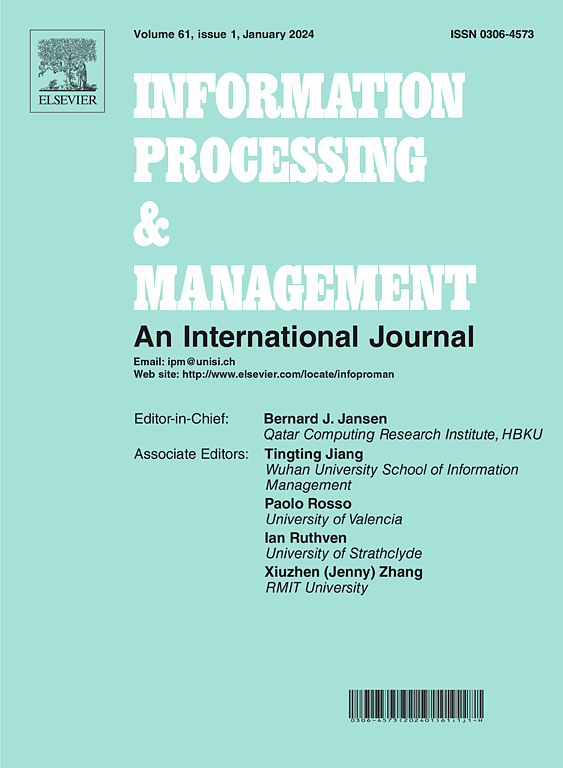SST: 利用自适应阈值进行半监督学习的自我训练
IF 7.4
1区 管理学
Q1 COMPUTER SCIENCE, INFORMATION SYSTEMS
引用次数: 0
摘要
得益于大量高质量的标注数据,神经网络在监督学习中表现出了卓越的性能。然而,在现实场景中获得这样的数据是昂贵和劳动密集型的。半监督学习(SSL)通过利用少量标记数据和大量未标记数据,为这个问题提供了解决方案。最近的研究,如Semi-ViT和Noisy Student,采用一致性正则化或伪标记,已经取得了显著的成就。然而,他们仍然面临挑战,特别是在准确选择足够的高质量伪标签,由于他们依赖于固定的阈值。最近的方法,如FlexMatch和FreeMatch引入了灵活的或自适应的阈值技术,极大地推进了SSL的研究。尽管如此,他们在每次迭代中更新阈值的过程被认为是耗时的、计算密集型的,并且可能是不必要的。为了解决这些问题,我们提出了一种新的、有效的、高效的SSL框架——自适应阈值(SST)的自我训练。SST集成了监督学习(Super-SST)和半监督学习(Semi-SST)。SST引入了一种创新的自适应阈值(SAT)机制,该机制可以根据模型的学习进度自适应地调整特定类别的阈值。SAT确保了高质量伪标签数据的选择,降低了伪标签不准确和确认偏差的风险(模型在训练过程中会强化自己的错误)。具体来说,SAT可以防止模型过早地纳入低置信度伪标签,减少误差强化并提高模型性能。大量的实验表明,SST在各种架构和数据集上具有卓越的效率、泛化和可扩展性,达到了最先进的性能。值得注意的是,Semi-SST-ViT-Huge在竞争性ImageNet-1K SSL基准测试(没有外部数据)上取得了最好的结果,仅使用1%/10%的标记数据就能达到80.7%/84.9%的Top-1准确率。与使用100%标记数据的全监督deit - iii - viti - huge达到84.8%的Top-1准确率相比,我们的方法仅使用10%的标记数据就表现出更好的性能。这表明人工标注成本降低了十倍,显著缩小了半监督和全监督方法之间的性能差距。这些进步为SSL和实际应用中的进一步创新铺平了道路,在这些应用中,获得标记数据要么具有挑战性,要么代价高昂。本文章由计算机程序翻译,如有差异,请以英文原文为准。
SST: Self-training with self-adaptive thresholding for semi-supervised learning
Neural networks have demonstrated exceptional performance in supervised learning, benefiting from abundant high-quality annotated data. However, obtaining such data in real-world scenarios is costly and labor-intensive. Semi-supervised learning (SSL) offers a solution to this problem by utilizing a small amount of labeled data along with a large volume of unlabeled data. Recent studies, such as Semi-ViT and Noisy Student, which employ consistency regularization or pseudo-labeling, have demonstrated significant achievements. However, they still face challenges, particularly in accurately selecting sufficient high-quality pseudo-labels due to their reliance on fixed thresholds. Recent methods such as FlexMatch and FreeMatch have introduced flexible or self-adaptive thresholding techniques, greatly advancing SSL research. Nonetheless, their process of updating thresholds at each iteration is deemed time-consuming, computationally intensive, and potentially unnecessary. To address these issues, we propose Self-training with Self-adaptive Thresholding (SST), a novel, effective, and efficient SSL framework. SST integrates with both supervised (Super-SST) and semi-supervised (Semi-SST) learning. SST introduces an innovative Self-Adaptive Thresholding (SAT) mechanism that adaptively adjusts class-specific thresholds based on the model’s learning progress. SAT ensures the selection of high-quality pseudo-labeled data, mitigating the risks of inaccurate pseudo-labels and confirmation bias (where models reinforce their own mistakes during training). Specifically, SAT prevents the model from prematurely incorporating low-confidence pseudo-labels, reducing error reinforcement and enhancing model performance. Extensive experiments demonstrate that SST achieves state-of-the-art performance with remarkable efficiency, generalization, and scalability across various architectures and datasets. Notably, Semi-SST-ViT-Huge achieves the best results on competitive ImageNet-1K SSL benchmarks (no external data), with 80.7%/84.9% Top-1 accuracy using only 1%/10% labeled data. Compared to the fully-supervised DeiT-III-ViT-Huge, which achieves 84.8% Top-1 accuracy using 100% labeled data, our method demonstrates superior performance using only 10% labeled data. This indicates a tenfold reduction in human annotation costs, significantly narrowing the performance disparity between semi-supervised and fully-supervised methods. These advancements pave the way for further innovations in SSL and practical applications where obtaining labeled data is either challenging or costly.
求助全文
通过发布文献求助,成功后即可免费获取论文全文。
去求助
来源期刊

Information Processing & Management
工程技术-计算机:信息系统
CiteScore
17.00
自引率
11.60%
发文量
276
审稿时长
39 days
期刊介绍:
Information Processing and Management is dedicated to publishing cutting-edge original research at the convergence of computing and information science. Our scope encompasses theory, methods, and applications across various domains, including advertising, business, health, information science, information technology marketing, and social computing.
We aim to cater to the interests of both primary researchers and practitioners by offering an effective platform for the timely dissemination of advanced and topical issues in this interdisciplinary field. The journal places particular emphasis on original research articles, research survey articles, research method articles, and articles addressing critical applications of research. Join us in advancing knowledge and innovation at the intersection of computing and information science.
 求助内容:
求助内容: 应助结果提醒方式:
应助结果提醒方式:


